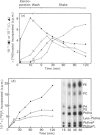Abstract
The analysis of the inositol cycle in Dictyostelium discoideum cells is complicated by the limited uptake of [3H]inositol (0.2% of the applied radioactivity in 6 h), and by the conversion of [3H]inositol into water-soluble inositol metabolites that are eluted near the position of inositol 1,4,5-trisphosphate [Ins(1,4,5)P3] on anion-exchange h.p.l.c. columns. The uptake was improved to 2.5% by electroporation of cells in the presence of [3H]inositol; electroporation was optimal at two 210 microseconds pulses of 7 kV. Cells remained viable and responsive to chemotactic signals after electroporation. The intracellular [3H]inositol was rapidly metabolized to phosphatidylinositol and more slowly to phosphatidylinositol phosphate and phosphatidylinositol bisphosphate. More than 85% of the radioactivity in the water-soluble extract that was eluted on Dowex columns as Ins(1,4,5)P3 did not co-elute with authentic [32P]Ins(1,4,5)P3 on h.p.l.c. columns. Chromatography of the extract by ion-pair reversed-phase h.p.l.c. provided a good separation of the polar inositol polyphosphates. Cellular [3H]Ins(1,4,5)P3 was identified by (a) co-elution with authentic [32P]Ins(1,4,5)P3 and (b) degradation by a partially purified Ins(1,4,5)P3 5-phosphatase from rat brain. The chemoattractant cyclic AMP and the non-hydrolysable analogue guanosine 5'-[gamma-thio]triphosphate induced a transient accumulation of radioactivity in Ins(1,4,5)P3; we did not detect radioactivity in inositol 1,3,4-trisphosphate or inositol 1,3,4,5-tetrakisphosphate [Ins(1,3,4,5)P4]. In vitro, Ins(1,4,5)P3 was metabolized to inositol 1,4- and 4,5-bisphosphate, but not to Ins(1,3,4,5)P4 or another tetrakisphosphate isomer. We conclude that Dictyostelium has a receptor- and G-protein-stimulated inositol cycle which is basically identical with that in mammalian cells, but the metabolism of Ins(1,4,5)P3 is probably different.
Full text
PDF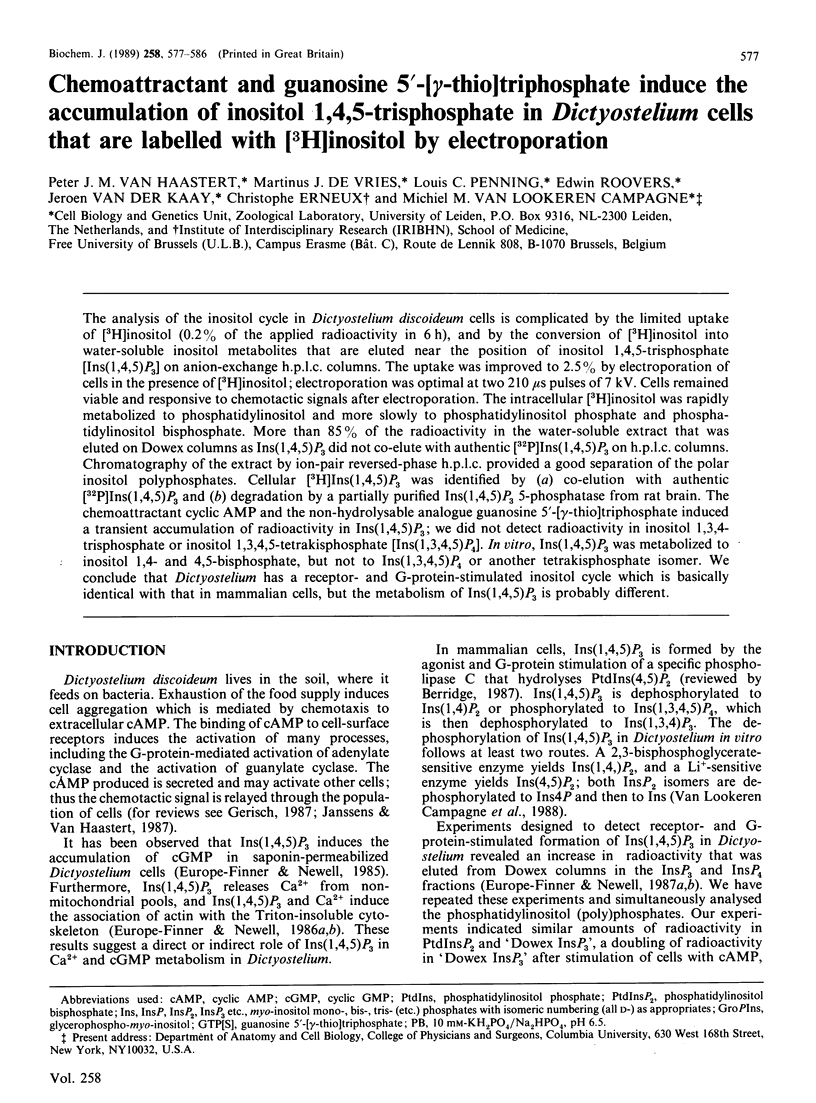
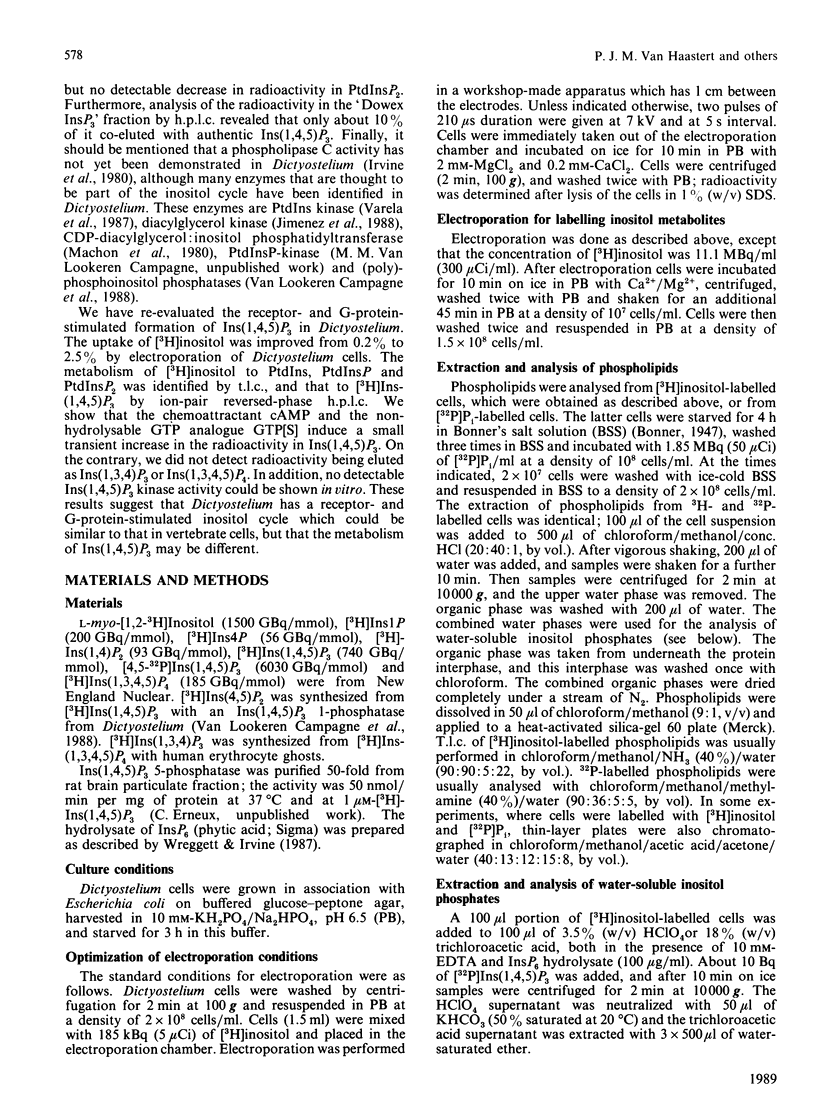
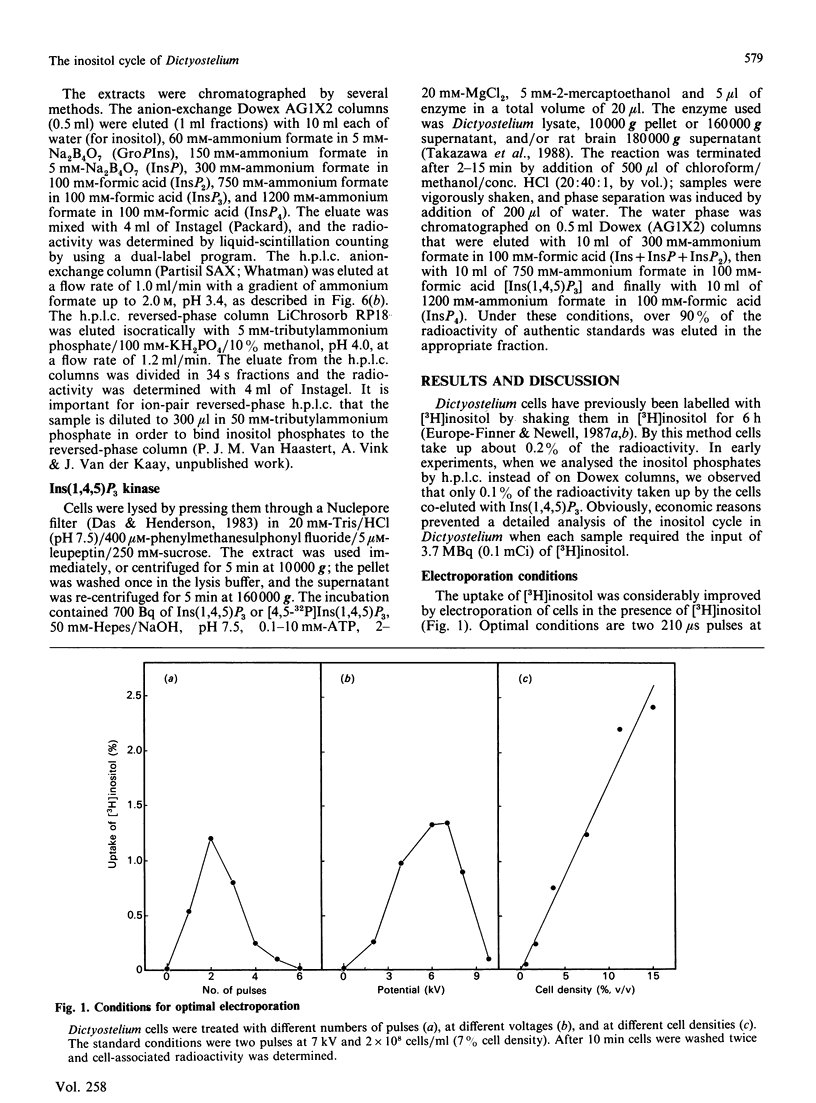
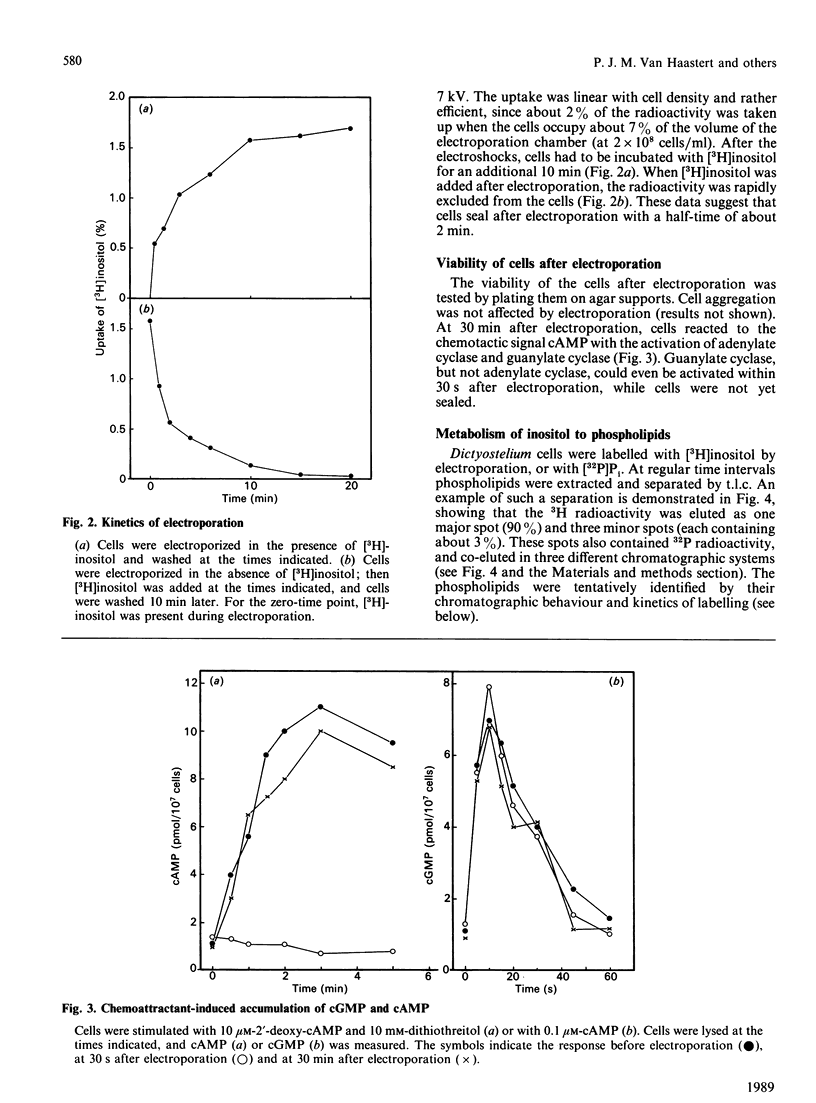
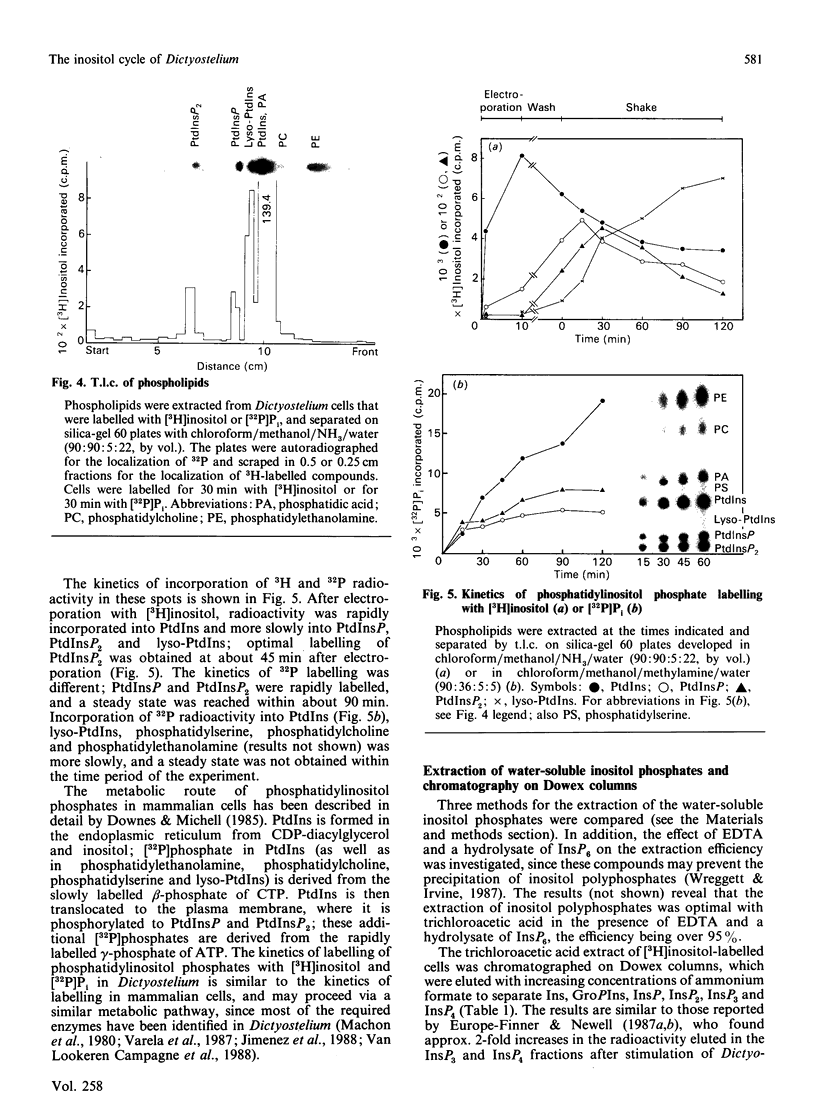
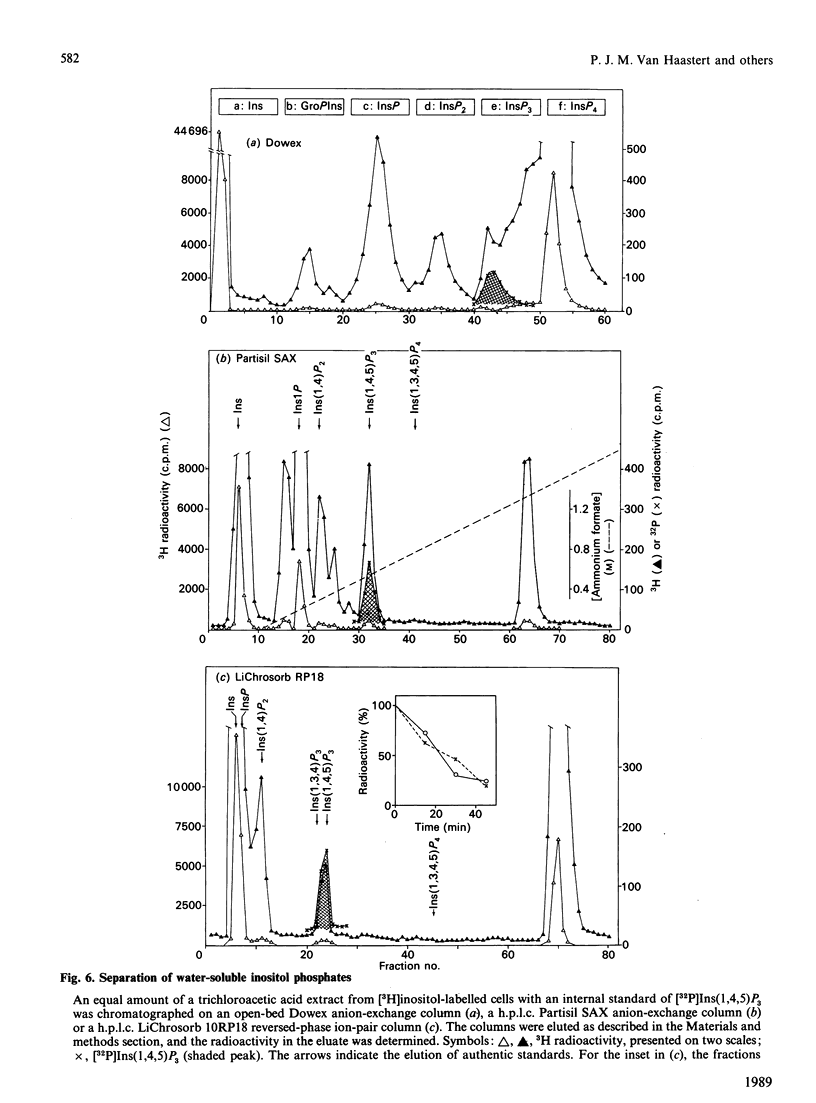
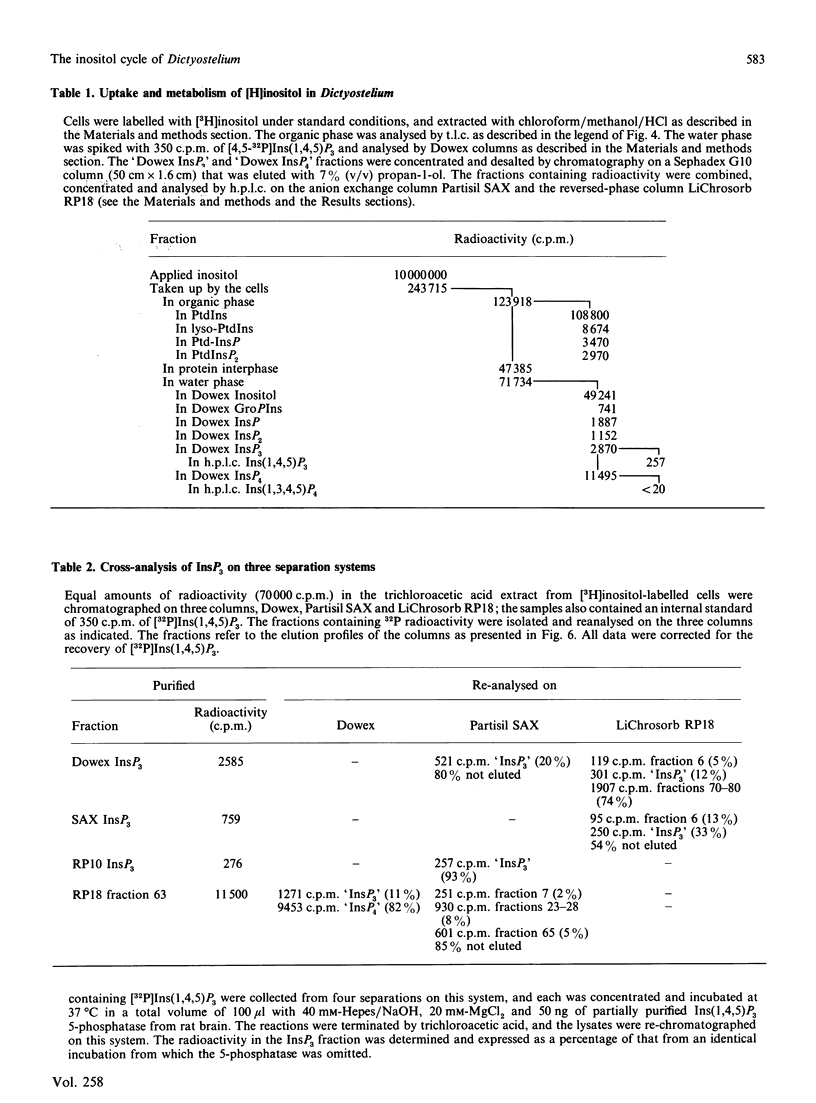
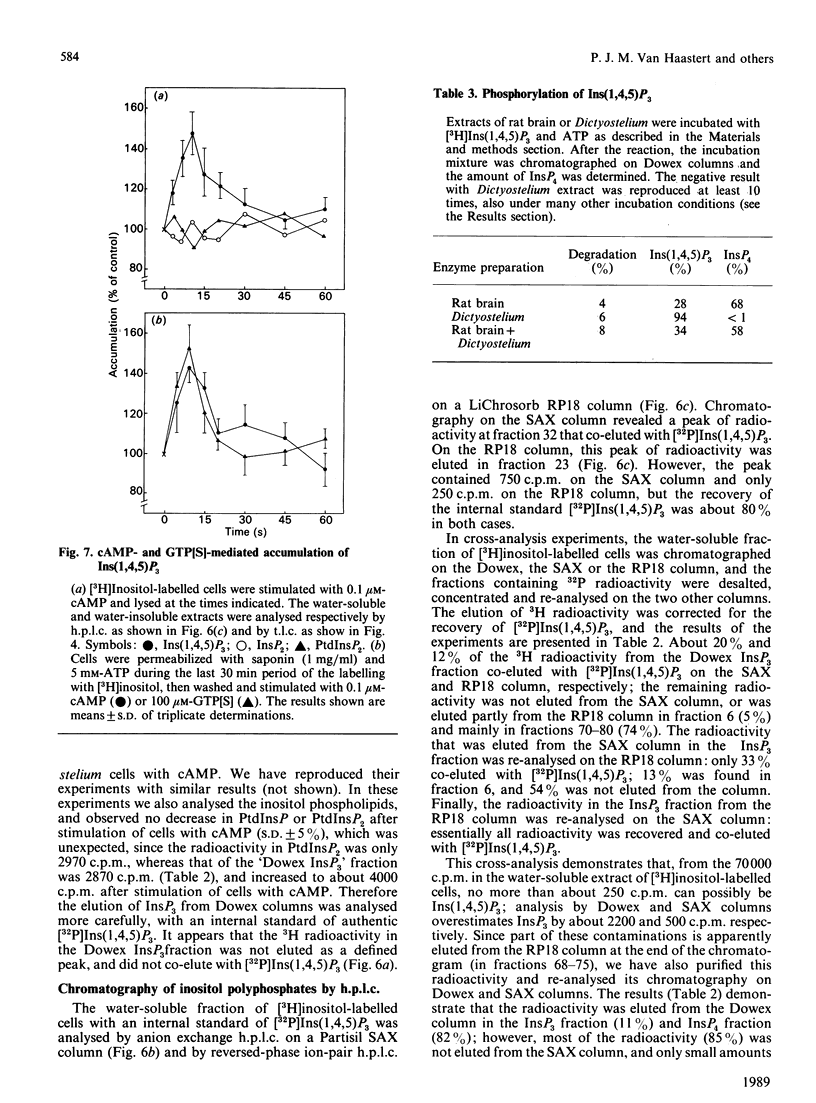
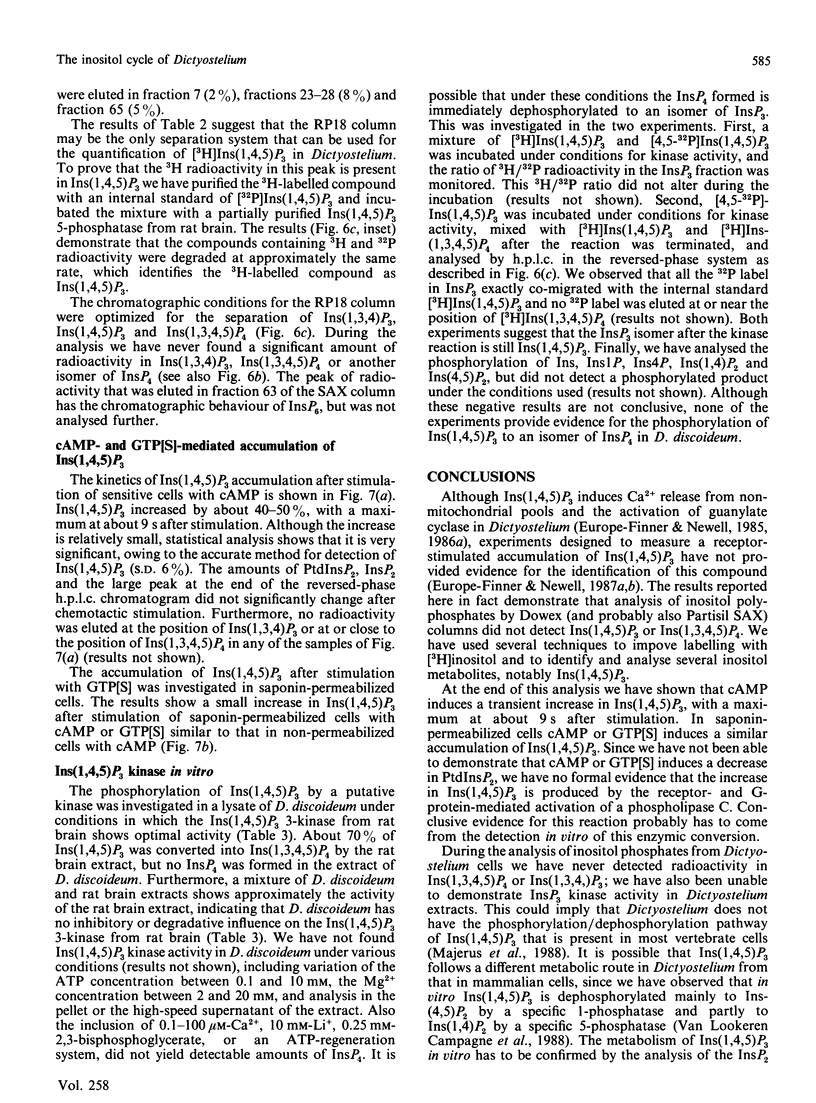
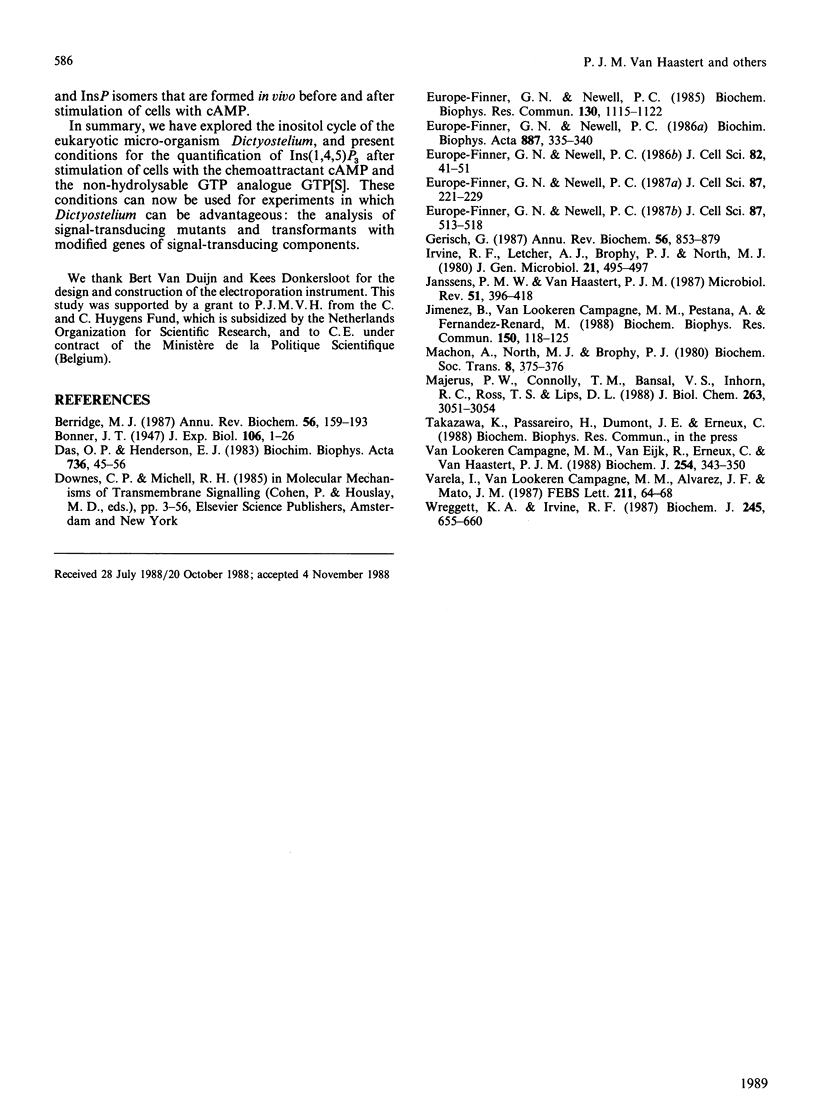
Images in this article
Selected References
These references are in PubMed. This may not be the complete list of references from this article.
- Berridge M. J. Inositol trisphosphate and diacylglycerol: two interacting second messengers. Annu Rev Biochem. 1987;56:159–193. doi: 10.1146/annurev.bi.56.070187.001111. [DOI] [PubMed] [Google Scholar]
- Europe-Finner G. N., Newell P. C. Cyclic AMP stimulates accumulation of inositol trisphosphate in Dictyostelium. J Cell Sci. 1987 Mar;87(Pt 2):221–229. doi: 10.1242/jcs.87.2.221. [DOI] [PubMed] [Google Scholar]
- Europe-Finner G. N., Newell P. C. GTP analogues stimulate inositol trisphosphate formation transiently in Dictyostelium. J Cell Sci. 1987 May;87(Pt 4):513–518. doi: 10.1242/jcs.87.4.513. [DOI] [PubMed] [Google Scholar]
- Europe-Finner G. N., Newell P. C. Inositol 1,4,5-triphosphate induces calcium release from a non- mitochondrial pool in amoebae of Dictyostelium. Biochim Biophys Acta. 1986 Aug 1;887(3):335–340. doi: 10.1016/0167-4889(86)90163-1. [DOI] [PubMed] [Google Scholar]
- Europe-Finner G. N., Newell P. C. Inositol 1,4,5-trisphosphate and calcium stimulate actin polymerization in Dictyostelium discoideum. J Cell Sci. 1986 Jun;82:41–51. doi: 10.1242/jcs.82.1.41. [DOI] [PubMed] [Google Scholar]
- Europe-Finner G. N., Newell P. C. Inositol 1,4,5-trisphosphate induces cyclic GMP formation in Dictyostelium discoideum. Biochem Biophys Res Commun. 1985 Aug 15;130(3):1115–1122. doi: 10.1016/0006-291x(85)91731-0. [DOI] [PubMed] [Google Scholar]
- Gerisch G. Cyclic AMP and other signals controlling cell development and differentiation in Dictyostelium. Annu Rev Biochem. 1987;56:853–879. doi: 10.1146/annurev.bi.56.070187.004225. [DOI] [PubMed] [Google Scholar]
- Janssens P. M., Van Haastert P. J. Molecular basis of transmembrane signal transduction in Dictyostelium discoideum. Microbiol Rev. 1987 Dec;51(4):396–418. doi: 10.1128/mr.51.4.396-418.1987. [DOI] [PMC free article] [PubMed] [Google Scholar]
- Jímenez B., Van Lookeren Campagne M. M., Pestaña A., Fernández-Renart M. Regulation of diacylglycerol kinase in the transition from quiescence to proliferation in Dictyostelium discoideum. Biochem Biophys Res Commun. 1988 Jan 15;150(1):118–125. doi: 10.1016/0006-291x(88)90494-9. [DOI] [PubMed] [Google Scholar]
- Machon A., North M. J., Brophy P. J. Biosynthesis of phosphatidylinositol in the cellular slime mould Dictyostelium discoideum by a CTP-independent pathway [proceedings]. Biochem Soc Trans. 1980 Jun;8(3):375–376. doi: 10.1042/bst0080375a. [DOI] [PubMed] [Google Scholar]
- Majerus P. W., Connolly T. M., Bansal V. S., Inhorn R. C., Ross T. S., Lips D. L. Inositol phosphates: synthesis and degradation. J Biol Chem. 1988 Mar 5;263(7):3051–3054. [PubMed] [Google Scholar]
- Van Lookeren Campagne M. M., Erneux C., Van Eijk R., Van Haastert P. J. Two dephosphorylation pathways of inositol 1,4,5-trisphosphate in homogenates of the cellular slime mould Dictyostelium discoideum. Biochem J. 1988 Sep 1;254(2):343–350. doi: 10.1042/bj2540343. [DOI] [PMC free article] [PubMed] [Google Scholar]
- Wreggett K. A., Irvine R. F. A rapid separation method for inositol phosphates and their isomers. Biochem J. 1987 Aug 1;245(3):655–660. doi: 10.1042/bj2450655. [DOI] [PMC free article] [PubMed] [Google Scholar]




